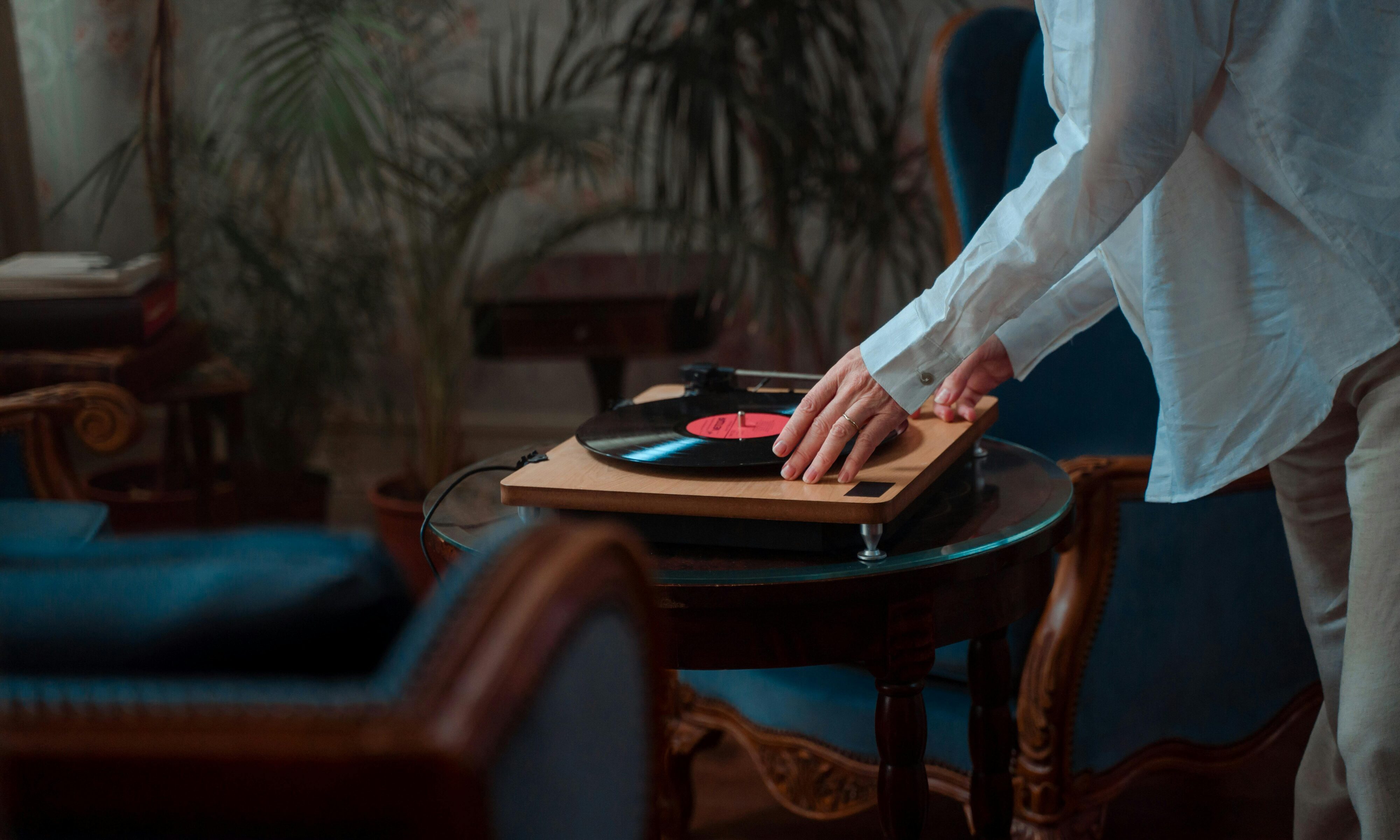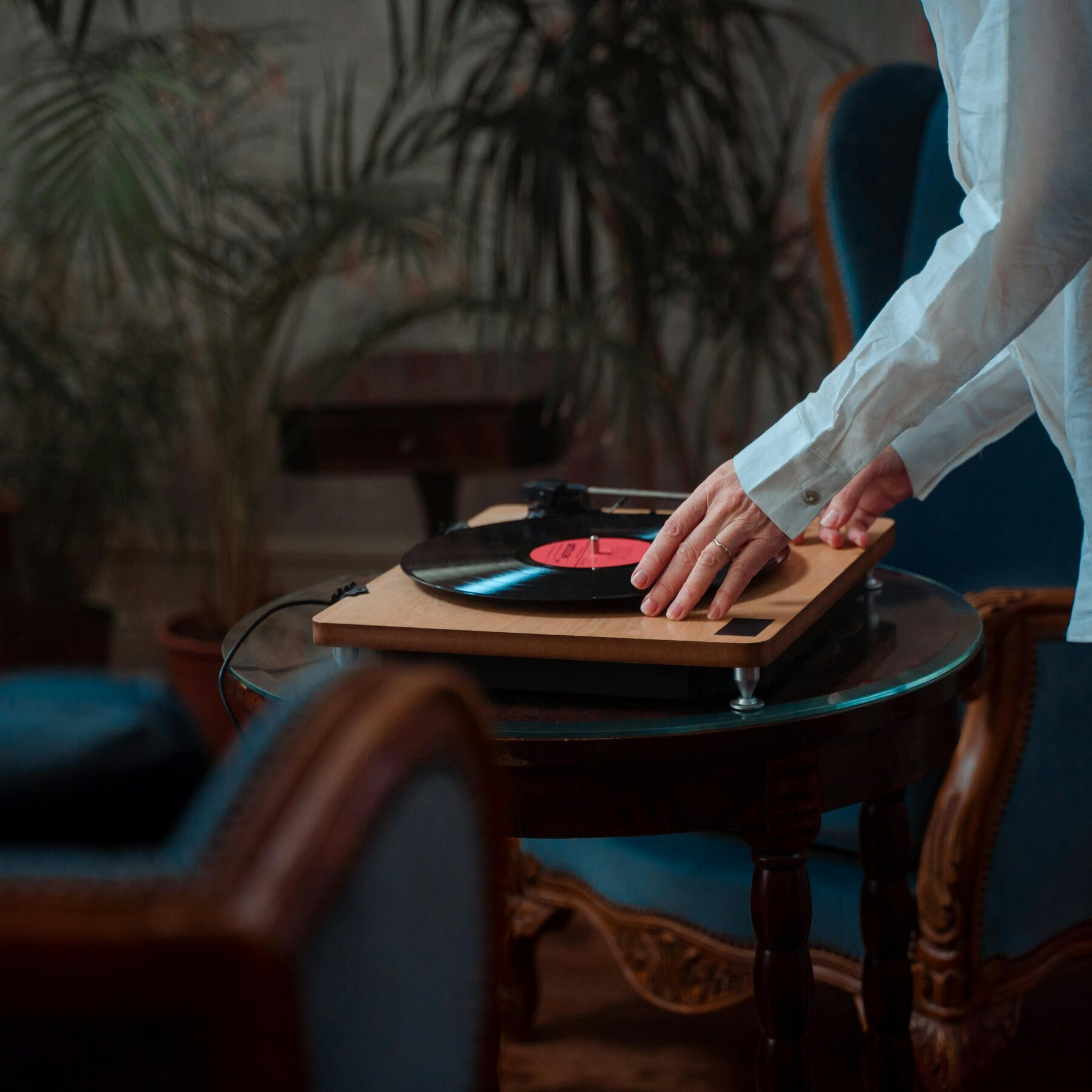“Rumours is a $20 [CAD] record.” So claimed a friend of mine some 15 years ago while selling records on the sidewalk up the street from my apartment in Toronto’s Kensington Market. Until then, I’d only known Fleetwood Mac’s best-selling album as a thrift store staple. What that price tag on that record meant was that the signified had shifted irretrievably. Vinyl was no longer a degenerate pursuit.
As someone entrenched in the music scene [writer Daniel Vila was a founder of a beloved, now defunct, DIY music venue in Toronto], in 2016, I made a Facebook post: “Records are too expensive. Discuss.” Replies of varying credibility came in fast and furious. A stridently political friend chastised me for complaining that unnecessary luxury items were too expensive (and advised me to steal music like everyone else). Though I disregarded the meat of his argument, the “luxury item” spiel stuck with me. How had vinyl, which I’d once known as the humble, underdog format, cheaper than CDs, reconstituted itself as the luxury format?
Following the MP3’s dematerialization of the music object at the turn of the millennium, music fans instantly became intoxicated with its speed, portability and capacity for infinite reproduction. The ensuing decline in physical sales was as swift as it was severe. Streaming’s advent, a few years later, launched the process into hyperdrive and recast digital “collectors” as mere subscribers. But it turns out that technological gatekeepers forgot a key ingredient: ambience.
Vinyl speaks to the need for something tangible that lasts
The ever-popular albeit mainstream CD just couldn’t compare — in pretty much every way. In terms of tactility, it was an unsatisfying half-measure, with one foot in the digital world and the other in the material. The LP, on the other hand, was firmly rooted in the mechanical age as a visibly spinning plastic disc being infinitesimally carved away by a tiny diamond. Even the act of flipping through music store bins highlighted a sensual divergence: the shrill clack-clack of CDs versus vinyl’s appealing whoosh-whoosh.
An LP was something to be cared for, the hardcore among us using white gloves to prevent the transmission of bodily oils. And an LP’s repeated plays always ensured a crackling aural patina. Conversely, a CD’s playability was as binary as the code etched upon its surface. It either played perfectly or skipped to the point of being unlistenable.
Brandon Hocura, the owner and operator of the long-running and internationally renowned avant-garde music label Séance Centre, connects vinyl’s contemporary allure to what it offers listeners during a moment of information overload. “Beyond being coordinates of social and cultural value, LPs verify your identity as a cultural actor. They symbolize time well spent. Listening to music is time well spent,” he says.
This ability to utilize your time aesthetically is especially important now. “We’re in this hyper-commodified, late capitalist period where time is really compressed,” Hocura adds. “People are stockpiling this valuable use of time, and it’s symbolized by these records.”
The contemporary climb of vinyl sales began in 2007, the year after Spotify’s debut. Some point to Record Store Day’s 2008 launch as the revival’s canonical inflection point, but seeds were planted earlier. In 2003, rock band The White Stripes played a week-long stint on Late Night with Conan O’Brien. Before each night’s performance, Conan hoisted a vinyl copy of the band’s album Elephant to his desk. By the decade’s end, this seminal act of LP lifting had become the norm across late-night talk shows, cementing its place on screens around the world.
As Record Store Day achieved institutional status — and interrupted the growing prominence of digital streaming platforms — it also created a platform for essential “limited edition” novelty pressings. The sheer number of “rarities” produced suggested that those in charge were unaware that a true rarity cannot be born; it must be made.
Vinyl listening has always been about bringing people together
Outside of the record store itself, this social nature of crate digging has deep roots, going back decades and spanning the entire globe. Northern English teens would giddily rifle through one another’s record collections and swap 45s at the legendary 70s nightclub Wigan Casino. Around the same time, American DJ David Mancuso began throwing his Love Saves the Day parties in his Greenwich Village home, dubbed The Loft. Labouring greatly over his record selections and hi-fi setup, he meticulously crafted an environment that elicited what can only be described as communal auditory euphoria. In doing so, he created the prototype for what would become the discotheque of the 1970s.
Pioneered by Jamaican transplant DJ Kool Herc, the Bronx block parties in the early days of hip-hop brought the party to the streets. DJ Kool Herc (also known as the Father of Hip-Hop) had wanted to put a stateside spin on the sound systems of his youth in Kingston, a culture which itself dates back to the 1940s.
Further east, Japan’s post-war era saw the emergence of the jazz kissa, a type of bar centred around a giant collection of jazz records and a phenomenal sound system, where patrons would gather and listen to entire LP sides in complete silence.
In the latter years of the vinyl revival, prices continued to increase. With manufacturing capacity stretched to the limit due to the global decline of pressing plants and margins being eroded by climbing mail costs, vinyl was quickly becoming a luxury item.
With this shift into the luxury space, it made sense that music lovers would similarly move their focus to playing their carefully curated records on something equally luxurious. So, many music lovers turned their attention to a forgotten but seemingly essential element of the listening experience: sound quality. It was high time to revive audiophilia.
Listening bars ushered in the new emphasis on sound quality — and a wave of vinyl lovers
Enter the modern-day listening bar. An amalgam of the jazz kissas refinement and The Loft’s quest for dancefloor ecstasy, listening bars took their hifi setups and in-house record collections seriously. The music was loud, tables and chairs were often removed later into the evening to make room for dancing, and natural wines, small plates, and mid-century decor rounded out the atmosphere
Get the
Three from 3
newsletter
Join our global community of sharp, curious thinkers to receive a carefully curated email of the three most important things to read, see and do this week.
Listen and learn.
Tune into Third Culture Leaders, a podcast hosted by our co-founder and publisher, Muraly Srinarayanathas.
Explore how leaders skillfully navigate multiple cultural landscapes, leveraging their diverse backgrounds to drive innovation and change.
Across the globe, listening bars began popping up, each offering their own unique spin on the trend. London’s Brilliant Corners was likely the first such bar in the West, opened in 2013 by brothers Amit and Aneesh Patel, and known for its surround sound, with each of the room’s four corners flanked by a towering premium Klipschorn speaker (a new pair will set you back $25K), mirroring the setup at Mancuso’s Loft.
Toronto got its first taste of the listening room rage in the summer of 2019 with the opening of The Little Jerry, which similarly installed a pair of Klipschorns to power their dancefloor, augmented by an additional pair of Klipsch La Scala speakers. Stones Throw Records opened up the Gold Line Bar in 2018 in Los Angeles. New York’s Public Records, an audiophile multiplex, comprised five different rooms, each with their own sound system, vibe, and function. The listening bar explosion also fueled an interest in audiophile gear at home, attracting a new generation and demographic.
But arguably no one embodied the possibility of creating sonically rich listening environments more than mythic figure Ken Fritz, a man who spent 27 years and over $1 million assembling the Roden Crater of hifi rooms. He built an entirely new wing of his home to house the project, basing the dimensions on an Osaka concert hall. The three main speakers each weighed 1500 lbs. and stood 10 feet high, and his triple-tone-armed turntable weighed the same.
Fritz died in 2022, six years after completing his system. Although his dying request was to keep his life’s work whole, his daughter sold the components off piecemeal the following year. The trio of speakers, which had cost Fritz over $200k and untold hours of labour, sold for $10,100.
Perhaps it was always the fate of vinyl that its primary medium would function as scattered relics to be reassembled differently by a new generation. At its core, collecting vinyl isn’t about building shrines; it’s about carving out space and time for intimate connections with analog technology in a world that rarely slows down.

